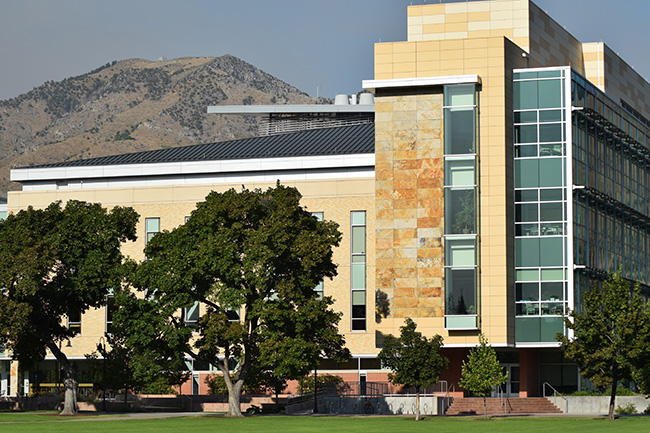Stan L. Albrecht Agricultural Sciences Building
Stan L. Albrecht was named Utah State University’s 15th president and assumed his new position on February 1, 2005. At the time of the announcement, Albrecht was serving as executive vice president and provost at Utah State. He previously served as dean of the College of Humanities, Arts and Social Sciences from 1998-2001.
In recognition of Albrecht’s tenure as Utah State University’s president, USU named its Agricultural Sciences Building on the Logan campus’s historic Quad the Stan L. Albrecht Agricultural Sciences Building. The Agricultural Sciences Building opened February 29, 2012, 150 years after U.S. President Abraham Lincoln signed the Morrill Act, which established land-grant institutions in the United States.
The $43.1 million, 125,000-square-foot building was funded through the Utah State Legislature after approval in 2010 of Senate Bill 280. It replaced the existing E.G. Peterson Agricultural Sciences Building, constructed in 1953 on the Logan campus.
Memorial Plaza

In 2008, a 7-foot by 20-foot black granite, bronze and steel memorial sculpture was made to honor the eight students and one instructor from Utah State University’s College of Agriculture and Applied Sciences whose lives ended suddenly in a tragic accident in fall 2005.
The sculpture is composed of nine panels, 3-feet-by-3-feet, representing an agricultural interest of each of the nine men who passed away. Two half-circles, above and below the panels, include the men’s names. At the lower left of the installation is a bronze rubbing element that allows visitors to make a paper rubbing as a personal memento of the memorial.
The memorial commemorates the lives of Steven D. Bair, 22, Moses Lake, Washington; Dusty Dean Fuhriman, 22, Tremonton, Utah; Justin W. Gunnell, 24, Wellsville, Utah; Justin Huggins, 22, Bear River City, Utah; Jonathan Dennis Jorgensen, 22, Peoa, Utah; Curt A. Madsen, 23, Payson, Utah; Ryan Wayne McEntire, 22, West Point, Utah; Bradley G. Wilcox, 26, Salt Lake City, Utah; and instructor Evan Parel Parker, 45, Hooper, Utah.
In front of the memorial sculpture sits a bench named in honor of Cody and Elizabeth Bingham. Cody, Senator in the College of Agriculture and Applied Sciences at the time, joined his wife and university administrators for an anxious nighttime vigil in Old Main while awaiting law enforcement and hospital reports following the tragic news. In the days that followed, Cody emerged as a calming, guiding presence. Even then, he was thinking about a lasting tribute, but focused his attention on the immediate demands of tending to distraught family, friends and classmates.
Over time, Cody returned to planning a permanent structure on campus to honor the memories of those who perished. He was cheered by the many individuals and groups who have stepped forward to help.
Luke’s Cafe on the Quad
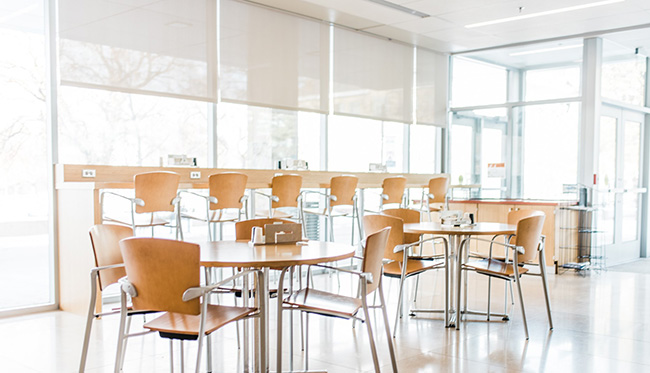
Growing up on a farm, H. Alan Luke (1918-2017), quickly learned the rewards of hard work and the value of land. He graduated as valedictorian of Piute High School and received a scholarship to Utah State Agricultural College (now Utah State University), where he earned a degree in agricultural economics in 1941. Alan served in the Army during World War II, and qualified for the Signal Corps. He attended graduate school in Ithaca, New York, where he earned both a master’s and doctorate from Cornell University. Upon graduation, Alan was hired as an associate professor at the University of Maine, and later became a marketing specialist and senior economist with the USDA in Washington, D.C. He worked in Milk Market Administration in Florida and Utah.
In Denver, Colorado, Alan became the Milk Market Administrator for several western states. In 1973, Cream of Weber, Hi-Land and Challenge dairies decided to merge and recruited Alan to be president and help establish Western General Dairies in Salt Lake City, Utah. Alan later went to Tacoma, Washington, where he was a joint professor for both Washington State and Oregon State Universities. His expertise was always in demand and he consulted in dairy marketing for many years after.
George B. Caine Atrium (1889-1969)
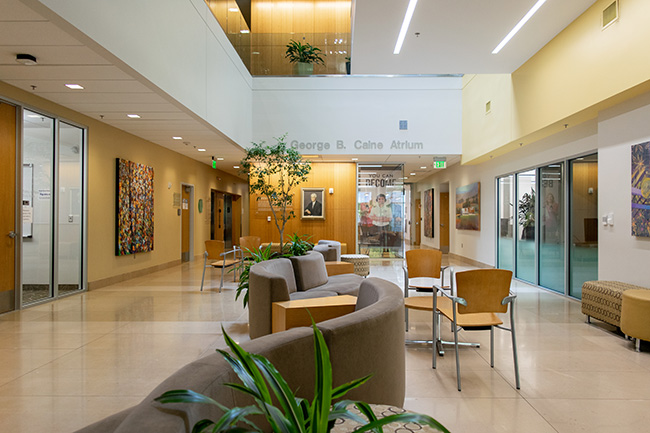
George B. Caine’s research, teaching and leadership were essential to the founding of the Department of Dairy Industry at the Utah Agricultural College, the establishment of the college’s first dairy herd and the creation of the Caine Dairy Research and Teaching Center.
A native of Logan, Utah, George graduated from the Utah Agricultural College (now Utah State University) in 1912 and then earned his master’s in animal husbandry from the University of Missouri. Caine returned to the Utah Agricultural College in 1915, teaching numerous classes in the dairy sciences and overseeing the school’s dairy herd. He served as head of the Department of Dairy Industry for many years until his retirement in 1955. He was involved with various scientific dairy associations, authored several books on dairy herd management and published more than one hundred dairy science articles. Among the highlights of his rich legacy are the important roles he and the university played in establishing Cache Valley dairy herds and helping dairymen throughout the Intermountain area.
He married Marie Stoddard Eccles in 1916, and they raised their children, Kathryn Caine Wanlass, George Eccles Caine and Manon Caine Russell, in the Caine Home at the base of Old Main Hill. The Caines were avid supporters of the university and the Cache Valley community, a tradition which continues through their posterity.
Campbell Scientific Lecture Hall
Room 101
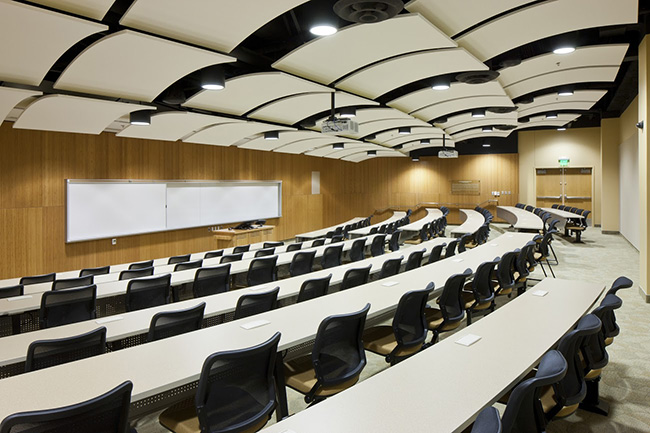
During the mid-twentieth century, Sterling A. Taylor influenced many students in the College of Agriculture with his leading research, teaching skills and uncanny ability to inspire and develop the character of his students. Dr. Taylor mentored three sons of H. Sanford and Rosalie B. Campbell while they were students in his soil laboratory. When the opportunity arose in 1974 to start a new instrument manufacturing company, Campbell Scientific, Inc., was co-founded by Eric and Evan Campbell. Eric had been one of the three brothers who worked in Dr. Taylor’s laboratory. Product strategies in the new company reflected both the experience and education gained from Dr. Taylor and Utah State University. Headquartered in Logan, Utah, Campbell Scientific is known internationally for its innovative measurement instrumentation.
Campbell Scientific expresses its deepest appreciation and gratitude to Dr. Sterling A. Taylor and the many other professors at USU who dedicate their careers to quality student mentoring and teaching leading to excellence in the community, the nation and the world.
Rudger H. Walker (1909-1979) Teaching Laboratory
Room 102
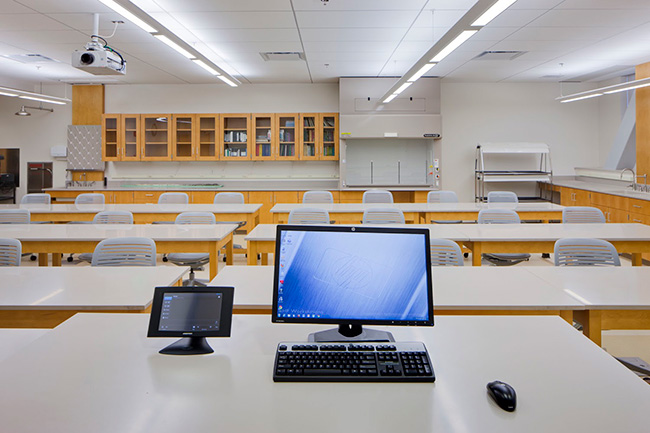
Rudger H. Walker served as dean of the School of Agriculture and director of the Agricultural Experiment Station at Utah State University from 1938-1960. He distinguished himself by improving agricultural technology around the world. During his career, Dr. Walker directed Utah State University contracts with the Iranian Ministry of Agriculture, served on the board of trustees of the American University in Beirut, Lebanon for 20 years, and chaired the United Nations Food and Agriculture mission to Thailand. He completed his career as dean of the College of Biological and Agricultural Sciences at Brigham Young University and received distinguished service awards from USU, BYU, and the Utah Academy of Sciences, Arts & Letters.
He was a scientist, administrator, beloved teacher, mentor, father and grandfather. A native of Rexburg, Idaho, Dr. Walker and wife, Fawn Davies Walker, married in 1923.
Tom C. Peterson Study Room
Rooms 104
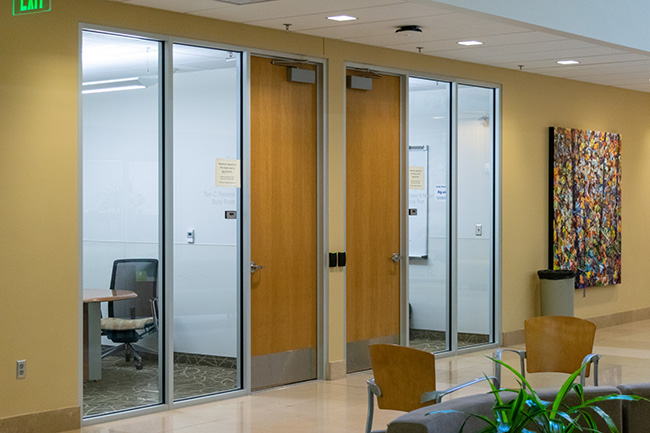
Tom C. Peterson served as a professor of Interior Design in the Human Environments Department in the College of Family Life at Utah State University for more than 30 years, where he perfected the art of making art enjoyable to hundreds of students. Whether it be music, fine art, performance art or design, Tom’s students left his Creative Arts class with a greater understanding of creativity and to what end creativity enhanced their education and their lives. His motto, “Nothing is wrong expect doing nothing,” was reflected in his high student success rate. His knowledge and insight of design and its underlying artistic elements were freely given and students knew they could count on him for any academic advice or classroom support.
Tom’s love for teaching expressed itself in the highly prepared nature of his lectures. He took the time to get to know each and every one of his students by keeping his office doors open and by interacting with them in class. His experience as a professional interior designer and his invitation as a member of the Board of Visitors for the Foundation for Interior Design Education and Research spoke highly of his dedication to his profession and also to his commitment to enhance the classroom experience and educational opportunities for his students. USU was fortunate to have a professor, such as Tom, who instilled in his students a greater desire for knowledge and a desire to be life-long consumers of the arts and design.
Sydney M. Peterson Study Room
Rooms 105
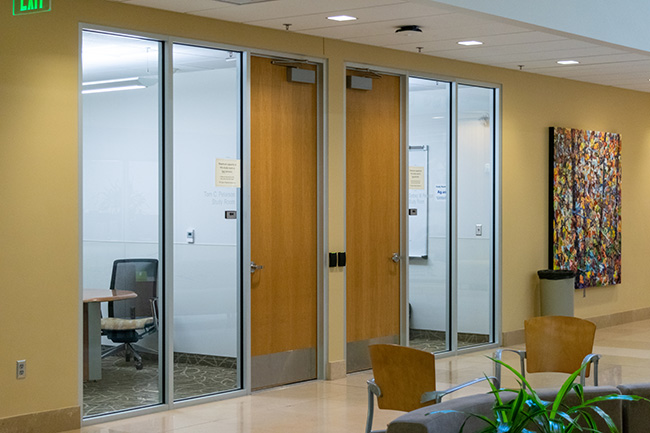
Sydney Peterson had a long and distinguished career at Utah State University for more than 40 years, where she served in a wide variety of areas, including the College of Family Life; Office of Research; Provost’s Office; Office of the President; Advancement and with the Board of Trustees. Most notably, Sydney served in tandem as chief of staff to Utah State University’s president and as secretary to the Board of Trustees for more than 15 years. Prior to assuming that role, she served as assistant provost.
Sydney was commended for her admirable leadership and involvement as a co-chair of USU’s Year of the Woman initiative in 2021. As co-chair, she showcased past and present women of distinction and led the university to celebrating benchmark voting rights of 1870, 1920 and 1965. She uncovered and publicized brilliant women and their accomplishments, organized events such as the Suffrage Celebration Concert, created a new pathway of historic suffrage sites in Logan, and was responsible for the publication of a brochure about the buildings on the Logan campus named in honor of women. The Year of the Woman celebration extended statewide and was an historic project.
For nearly two decades, Sydney was charged with planning and executing USU’s commencement ceremonies, a responsibility at which she excelled. Because of her meticulous organization, thousands of students and faculty over the years celebrated with their friends and family without ever worrying about the work behind the scenes. Her dedication is still felt by an entire committee of employees trying to accomplish what she alone did every year.
Sydney has an undergraduate degree in sociology from Brigham Young University and she earned a master’s in family and consumer economics from Utah State University. She is also a graduate of the Utah Chamber of Commerce’s Leadership Utah.
In addition to her work at USU, Sydney served as Past Chair of the Board of the National Association of Presidential Assistants in Higher Education (NAPAHE). She has also served on the Cache Valley Hospital Board and the Interfaith Council. She has been the chair of the Cache County Library Board, the Interfaith Council and USU Community Associates and been a member of the Cache Valley Regional Council.
Dustin Fuhriman (1983-2005) Student Laboratory
Room 107
Dustin Fuhriman is one of the Utah State University College of Agriculture and Applied Sciences students who lost his life at age 22 in a tragic van accident in 2005 after returning from a field trip. Dusty attended schools in Cache County prior to moving to Tremonton and graduated from Bear River High School in 2001. At USU, he was interested in learning how to turn agricultural products into biofuels as an alternative fuel source. Auto mechanics, target shooting and computers were some of the activities Dusty loved. He already had completed an auto-mechanics program at Bridgerland Technical College when he enrolled at USU.
Kyle & Tyson Kesler Conference Room
Rooms 109

Dr. Kevin Kesler received both his bachelor’s (1982) and master’s (1984) in agricultural education from Utah State University. Kevin then received his doctorate from Iowa State University. His wife, Robyn, also received her bachelor’s and master’s from USU in home economics and consumer education.
Kyle and Tyson followed in their parents’ footsteps, each graduating from Utah State University with bachelor’s in mechanical engineering.
The Keslers have been actively involved in USU Extension’s 4-H program. 4-H inspires the next generation of leaders, inventors, entrepreneurs and problem solvers. They are the nation’s largest Positive Youth Development Program and offer a wide variety of programs, projects, contests and events from livestock to sewing, and leadership to robotics.
The Philip Victor Rasmussen Conference Room
Room 113

Several Utah State University Extension faculty members were recognized by the National Association of County Agricultural Agents (NACAA) for their contributions to education and agriculture in Utah.
Phil Rasmussen, a former USU Extension assistant director, received the 2017 Service to American/World Agriculture Award. Phil spent the early part of his career establishing no-till research plots across the Intermountain West, encouraging the use of innovative and sustainable technologies. He also served as the first NASA-sponsored geospatial Extension specialist in 1999.
During his career, Phil published more than 200 articles and book chapters covering the fields of sustainable agriculture, soil physics and conservation and agronomic computer applications.
Kevin & Robyn Kesler Conference Room
Rooms 130
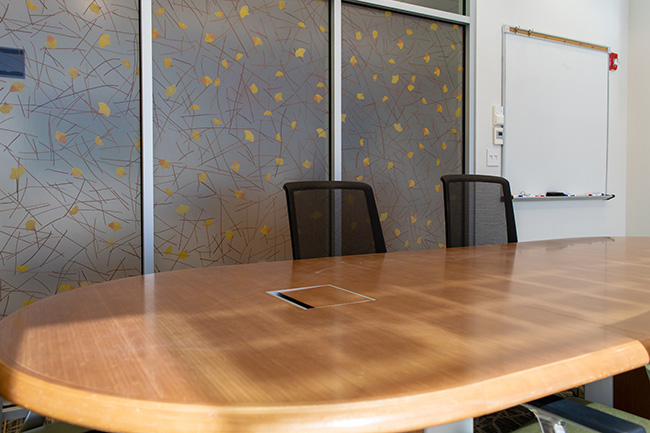
Dr. Kevin Kesler received both his bachelor’s (1982) and master’s (1984) in agricultural education from Utah State University. Kevin then received his doctorate from Iowa State University. His wife, Robyn, also received her bachelor’s and master’s from USU in home economics and consumer education.
The Keslers have been actively involved in USU Extension’s 4-H program. 4-H inspires the next generation of leaders, inventors, entrepreneurs and problem solvers. They are the nation’s largest Positive Youth Development Program and offer a wide variety of programs, projects, contests and events from livestock to sewing, and leadership to robotics.
Anthon H. Lund (1844-1921) Study Room
Room 134
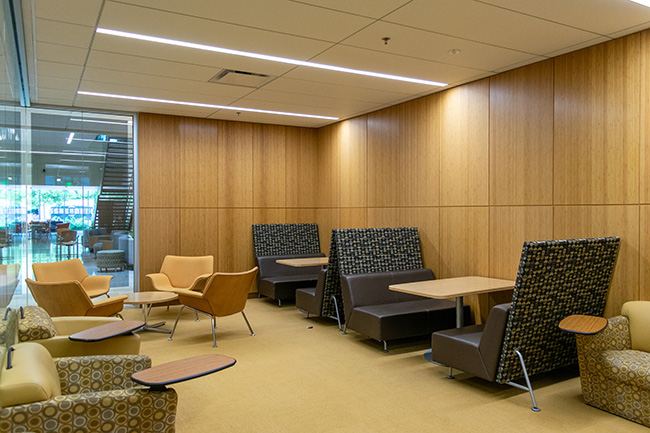
Anthon H. Lund, a prominent civic, business and religious leader, sponsored legislation in 1888 that established the Utah Agricultural College, which would later become Utah State University. A champion of both religious and secular education, Anthon was inspired by the agricultural high schools in his native Denmark. After learning of the Morrill Act that authorized the creation of one land-grant college in each state, Anthon proposed that such a college was needed in the Utah Territory. The Lund Act, authorizing formation of a land-grant college, was signed in March 1888, followed by the signing of the Hatch Act, establishing the Utah Agricultural Experiment Station.
During a long life of distinguished community and church service, Anthon was elected to the Territorial Legislature and served as an officer and board member of numerous corporations, including banks, stores, factories, a hotel and the Utah Capitol Commission. Most significant for Anthon were his appointments to educational institutes, including boards governing the University of Utah, Snow College, and LDS University (now Ensign College). At the time of his death in 1921, Anthon was serving as the senior apostle and member of the First Presidency of the Church of Jesus Christ of Latter-day Saints.
Utah Farm Bureau Computer Laboratory
Rooms 135-136
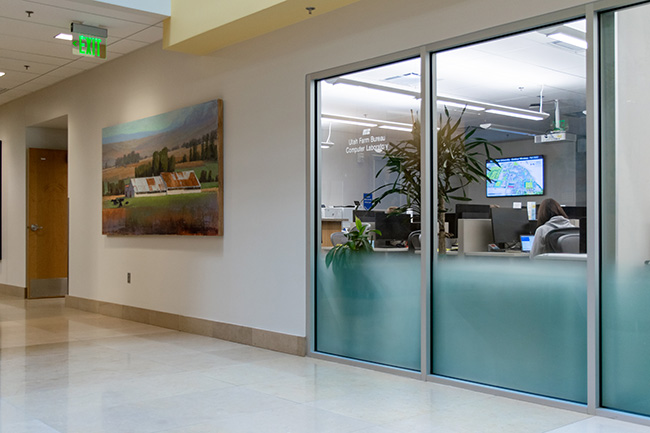
The Utah Farm Bureau Federation (UFBF) is the state’s largest voluntary organization of farmers and ranchers, consisting of more than 34,000-member families committed to protecting Utah’s farms and ranches, and ensuring a safe, fresh and locally grown food supply. The Utah Farm Bureau Federation is an affiliate of the American Farm Bureau Federation, which boasts more than 6 million members nationwide.
Farm Bureau is an independent, non-governmental, voluntary organization of farm and ranch families united for the purposes of addressing their problems and formulating action to achieve educational improvement, economic opportunity and social advancement and, thereby, to promote the national well-being.
The organization works to support its producer members through legislative advocacy, leadership development programs, commodity associations, rural health and safety programs, insurance products, marketing and other services.
The Utah Farm Bureau was organized in the fall of 1916 by a group of Utah farmers who met in Salt Lake City. D.D. McKay became the first president of the state organization and served until 1922. The first convention was held in 1918 at the Utah Agricultural College in Logan. Since then, the organization has developed into the largest general agricultural organization in the state of Utah.
Don B. Olsen (1930-2018) Classroom
Room 137
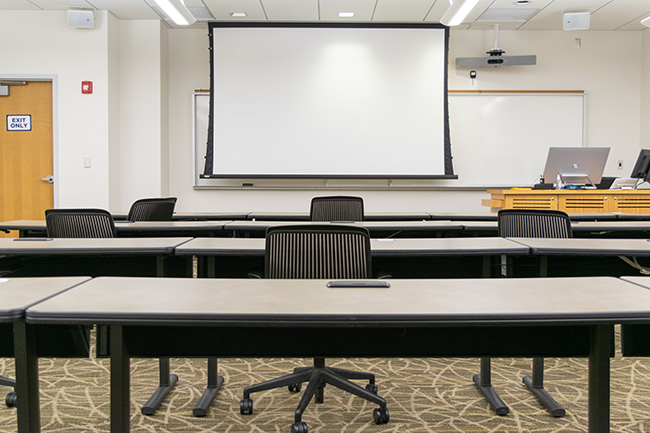
The path from being a veterinarian in a rural town to being named a “Living Legend” by the World Society of Cardio-Thoracic Surgeons in recognition of outstanding contributions to humanity through invention, discovery and mentoring, was a challenging and rewarding one, and a path that Don Olsen navigated with grace, vision, tenacity and hard work.
His pioneering research with blood pumps and artificial hearts in cattle and sheep made Dr. Olsen a valued member of the team that successfully implanted the first artificial heart in a human being. His modifications of existing surgical techniques and development of novel ones led to record setting survival times for animals with artificial hearts that allowed researchers to refine approaches to implants in humans.
Dr. Olsen’s skills and varied professional achievements led him to found the Utah Artificial Heart Institute. He was among the National Institutes of Health’s top research grant awardees for more than 25 years. He is the author or co-author of more than 290 peer reviewed papers, 16 book chapters and holds 16 patents in the United States and abroad. In addition to his own achievements, Dr. Olsen is equally proud of having mentored numerous student researchers and helping launch their careers. Beyond his direct involvement with students, he and his wife, Joyce, have generously established scholarship endowments at two Utah high schools and four universities.
Dr. J. Brent McKinnon (1942-2020) Study Room
Room 203
McKinnon and his wife, ReNee, both graduated from Utah State University, she from the Emma Eccles Jones College of Education and Human Services, where she obtained a teaching degree, and he from the College of Agriculture and Applied Sciences. A passion for taking care of animals, particularly bovine, led him to the School of Veterinary Medicine at Colorado State University. He graduated at the top of his class, was recognized as the outstanding large animal veterinary student, and earned the name most people have known him by since: Doc.
For the next 42 years, the McKinnons owned and operated Bear River Animal Hospital in Tremonton, Utah. In addition, they provided veterinary services for ranchers in Cache, Rich and Weber counties, as well as parts of Southern Idaho and Wyoming.
Stanley S. Richardson Study Room (1901-1995)
Room 204

Stanley Richardson received a bachelor’s from Utah State Agricultural College and a master’s from the University of Idaho. He taught in high schools in Idaho and Utah, and was principal at Grace High School for seven years. He was the Idaho State Supervisor of Vocational Agriculture for 13 years and served as department head of vocational education at Utah State University from 1950 to 1967. Following his retirement, he organized and became the first director of the Bridgerland Applied Technology Center.
Stanley organized the first Utah Chapter of the Future Farmers of America at Richmond. He was awarded Idaho and Utah Honorary State Farmer Degrees and received the Honorary American Farmer Degree, the nation’s highest vocational agriculture award. He received the Distinguished Service Award from USU in 1985, and was awarded the first USU College of Agriculture Distinguished Alumni Award in 1995.
Godfrey-Keith Conference Room
Room 235
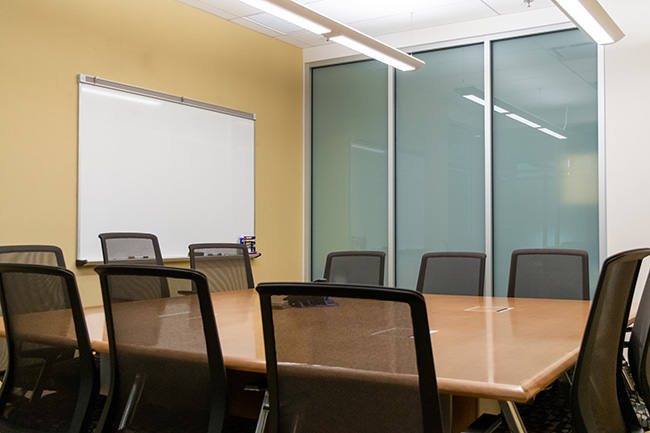
Named for two emeritus professors, E. Bruce Godfrey and John E. Keith, both very distinguished faculty members in Applied Economics.
E. Bruce Godfrey received the Distinguished Scholars Award from the Western Agricultural Economics Association in 2006. He is the first Utah State University professor to receive the award, in recognition of his work with WAEA and research of agricultural economics. Godfrey also received the Service to the Industry Award at the annual convention of the Dairy Farmers of Utah, in recognition of his dedication to the dairy industry, involving the general areas of farm and ranch management and natural resource economics. His research focuses on the economics of using public and private lands, including the taxation of agricultural lands, the designation of federal lands as wilderness and the preservation of open space lands. His research has been widely cited and used throughout the West.
John E. Keith received the John and Olga Gardner Prize from the Utah Academy of Sciences, Arts and Letters at the organization’s 101st annual meeting. He was recognized for his significant work in water management around the world, including Mexico, Africa, Central Asia, Egypt and Morocco. His focus has been to bring the tools of economic analysis to water policy making in the real world and improving practical decision making about water management and use.
Ken and Cynthia White Conference Room
Room 252
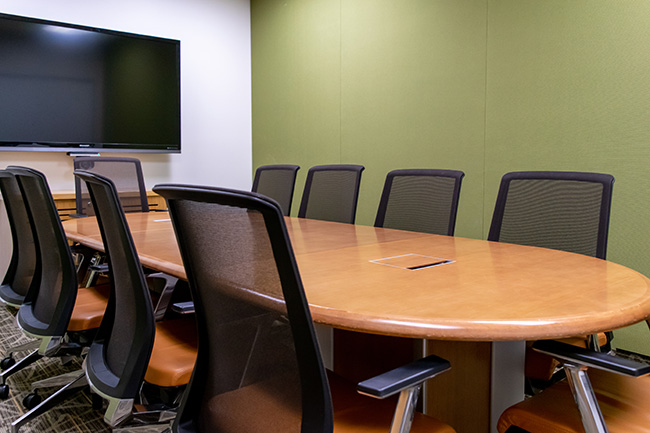
Kenneth L. White has been a faculty member in Utah State University’s Department of Animal, Dairy and Veterinary Sciences at Utah State University since 1991, and serves as the vice president for USU Extension, dean of the College of Agriculture and Applied Sciences and director of the Utah Agricultural Experiment Station at Utah State University. Prior to this, Dr. White was a member of the faculty in the Department of Animal Science at Louisiana State University. He received a bachelor’s in animal science from Brigham Young University in 1979, and a master’s in animal science and doctorate in physiology from the University of California, Davis in 1982 and 1986, respectively.
Dr. White has been actively involved in directing a competitive research program throughout his 32-year academic career. As an independent researcher, he has generated over 15.5 million dollars in extramural funding to support research in Animal Reproduction and Embryonic Development. In 2006, he was recognized as Researcher of the Year, in 2007 he was honored as Undergraduate Mentor of The Year and in 2011 as Utah State University’s Outstanding Graduate Mentor. He has published over 100 peer-reviewed scientific articles in journals. He led the nuclear transfer (cloning) team that produced the world’s first cloned equines that resulted in the birth of three identical mule foals.
As an administrator, Dr. White was one of the primary leaders responsible for establishing the USU School of Veterinary Medicine, the Utah Water Extension Initiative and other significant new Extension and Experiment Station funding initiatives. Under his leadership, the USU College of Agriculture and Applied Sciences experienced double-digit growth in students and an all-time high in total number of students and scholarships awarded.
Professor A. A. Heravi Atrium
Room 300K
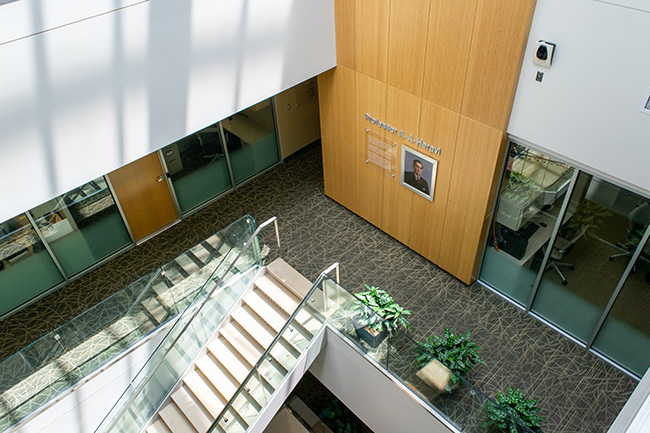
Professor A. A. Heravi was born in Tehran, Iran, in 1909. He left his native country in 1919 and returned in 1934 as a professor of agriculture at the University of Tehran. Professor Heravi was the youngest professor and the first to teach in his respective field. He became known as the father of scientific farming in Iran.
In 1938, Professor Heravi wrote Family Farming, the first book in Iran on agriculture that was widely used throughout the country. He was beloved by the students who came through his classroom. He gave as much time to his students as he could, often saying, “my time is the students’ time.”
Professor Heravi held deep values for education. When Dr. Mehdi Heravi wanted to go to school in America, his father consented, but only if he went to Utah State University. Mehdi Heravi became a great academician at Utah State and went on to serve as a university professor, vice president and provost at other academic institutions.
Jennifer N. Gandhi Study Room
Room 303
Jennifer Gandhi serves as the Chief Operating Officer of Jenneil Biotech of Wisconsin. Her mother, Josephine, became CEO upon the death of her husband, Niranjan R. Gandhi in 2018. Jennifer’s brother, Neil, became president and Jennifer became COO, when their father died. The food flavor manufacturing operations are centered in Wisconsin and in Germany. The company flavors foods worldwide. The company products have expanded to include edible and safe antibiotics and has received a Presidential Green Chemistry award.
Billie W. Curtis (1947-2011) Study Room
Room 304
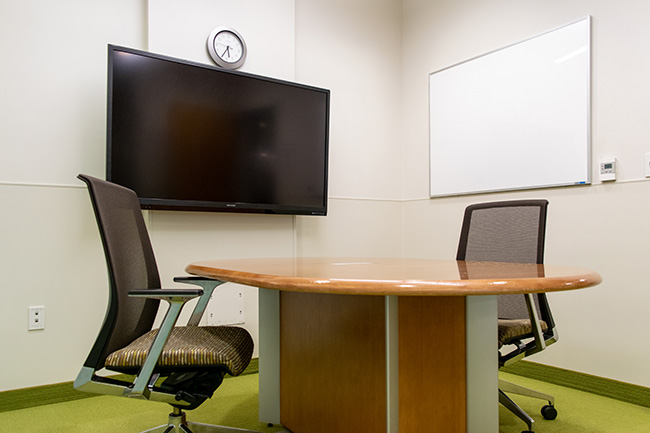
Billie Carol Wilcock Curtis is a Utah State University alumna who graduated from USU in 2007, earning a bachelor’s in horticulture with an ornamental emphasis.
Billie was a hard worker, whether it was delivering newspapers, decorating wedding cakes, serving school lunches, tasting cheeses for the university or helping on the family farm. After her college graduation she worked as a research assistant at the Research Greenhouse at Utah State.
Billie’s great loves were her family, her church, learning and nature. She loved all God’s creations, be they people, animals or plants. The people in her life knew her as an example of integrity, honor and generosity.
Apogee Conference Room
Room 331
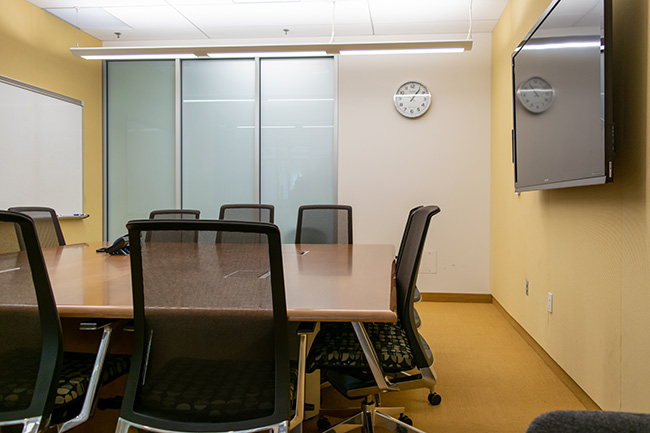
Bruce Bugbee founded Apogee Instruments, Inc. in 1996 as a side venture to his career as a professor and researcher at Utah State University. R&D and production of Apogee’s earliest sensors occurred at his kitchen table and then moved into his garage. Since then, Apogee has grown into a world-class manufacturer of environmental sensors with dozens of employees, a state-of-the-art headquarters and manufacturing facility, and over 100,000 products in
the field.
Bruce has always been a scientist first and businessman second. One of the keys to Apogee’s success has been his personal passion for creating top-quality, cost-effective instrumentation for scientists that meet his own rigorous performance standards in the field and
the lab.
A&D Landscaping Conference Room
Room 348

A&D Landscaping is a complete design build company that has been providing clients with quality landscape services since 1994. Owners, Jared Gillman and Craig Aston, both attended Utah State University.
Jared graduated from Brigham Young University-Idaho with an associates in horticulture and received a bachelor’s in horticulture with an emphasis in landscape construction from USU. He has also completed a master’s in landscape business management with the American Nursery and Landscape Association. Jared is certified in interlocking concrete pavement installation through the ICPI, and in retaining wall construction through the NCMA. He has been involved in the estimating, construction and design of all types of commercial and residential projects. Jared manages operations and has been involved with A&D Landscaping since 1997. Jared oversees sales, bidding and estimating and general daily operations.
Craig has been involved in the horticulture industry with both a retail garden center and a landscape construction company for nearly 30 years. He has served as the president of the Utah Nursery and Landscaping Association (UNLA) and as a state senator for the American Nursery and Landscaping Association. Craig also teaches courses on plant science-horticulture, landscape management, landscape design and pest management at USU.
Ambassador Ardeshir Zahedi (1928-2021) Atrium
Room 406
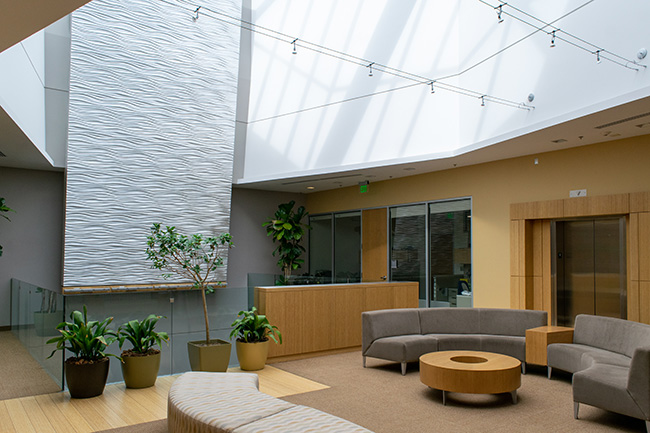
Globally celebrated as a lifelong champion of world peace and understanding, Ardeshir Zahedi shaped more than three decades of geopolitical history. Twice he served as Iran’s ambassador to the United States.
Ardeshir’s widely respected and far-reaching influence and diplomacy were also hallmarks of his service as ambassador to the United Kingdom’s Court of St. James, as Iran’s foreign minister and as head of the Iranian delegation to the United Nations General Assembly. He worked closely with seven U.S. presidents, entertained countless iconic artists and celebrities and still once proclaimed, “I was born at Utah State University.”
In 1950, Ardeshir graduated from Utah State Agricultural College (now Utah State University) with a bachelor’s in animal science. He then returned to tumultuous times in Iran, where he shaped the country’s modern political history while serving as an aid to his father, the prime minister and an adviser, confidant, son-in-law and friend to the last Shah of Iran. His maternal grandfather served as the first prime minister of Iran.
After graduating, Ardeshir’s deeply held feelings and support for Utah State University remained constant. He established an endowment in the College of Agriculture and Applied Sciences, funded undergraduate scholarships and facilitated the Ardeshir Zahedi International Professors of the Year professorship.
Borrowing the very words with which he so often addressed others, Utah State University honors the distinguished life work of Ardeshir Zahedi: our “dear and noble friend.”
Jacobsen Conference Room
Room 407
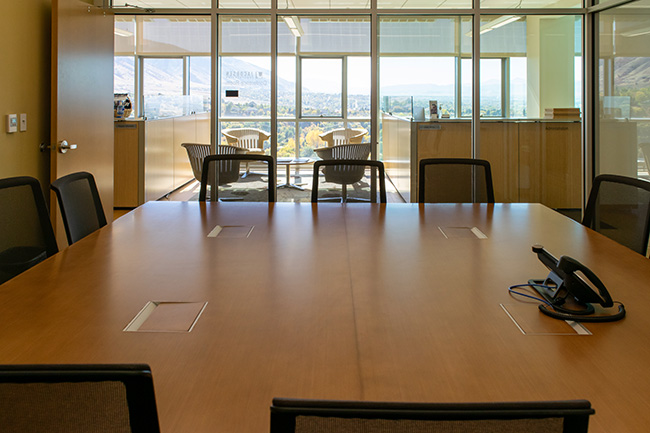
Danish teenager Soren Jacobsen, landed on Ellis Island with $24 and one big American dream: to change its skyline. Ninety-three years later Jacobsen’s dream remains the same—to create structures that thrill clients and serve communities.
The Salt Lake City-based Jacobsen Construction was selected as construction manager and general contractor by Utah State University for the institution’s College of Agriculture and Applied Sciences building in Logan, a $35 million project.
Jacobsen Construction has been a consistent partner in the building and renovation of various Utah State University buildings, including the Merrill-Cazier Library, Caine Performance Hall, Matthew Hillyard Animal, Teaching and Research Center at the Skaggs Equine Center and the Central Instructional Building on the Utah State University Eastern campus.
Lowell C. Titensor Conference Room
Room 409

Lowell Christian Titensor learned the importance of work and the satisfaction of a job well done in his early years and those values became the foundation of his life. He grew up in Northern Utah where he put in long hours working alongside his parents, Frederick Titensor and Ellen Hyer - milking cows, hauling hay, feeding animals, hoeing weeds and accomplishing the many other tasks that are required to sustain a successful, small, family farm.
During the Great Depression, Lowell married Marjorie Wiser and because jobs were scarce he continued working on the family farm. Through his hard work, he expanded the farm and added raising, breeding and trading fine horse stock. His years on the farm provided valuable learning experiences and when there was an opportunity to use his knowledge in a new way he took a chance and assumed ownership of a farm equipment business. From the company’s beginnings in Lewiston, Utah, Lowell successfully expanded the business in northern Utah and southern Idaho. Thanks to his vision and dedication, Valley Implement is still a thriving family business with locations in Utah and Idaho.
Lowell always carried himself straight and tall and with a dignity that was often commented on by his friends and colleagues. He left to his family and friends a memorable example of how to fulfill obligations, work hard and enjoy life.
H. Alan Luke (1918-2017) Conference Room
Room 412
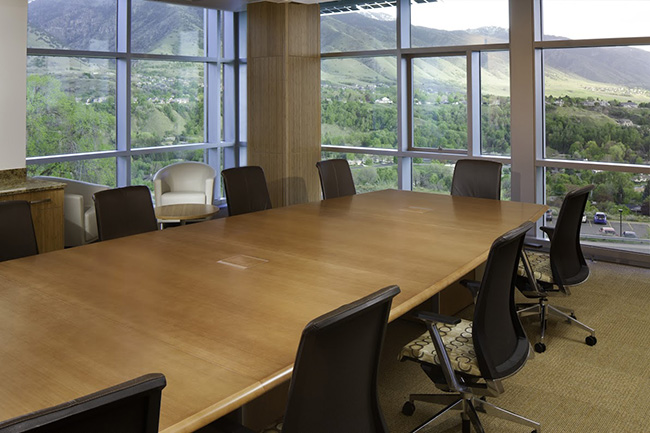
H. Alan Luke earned a degree in agricultural economics at the Utah Agricultural College (now Utah State University) in 1941 and went on to complete a master’s and doctorate at Cornell University. He made a fundamental difference in agriculture for many years, restructuring the Federal Marketing Order system so dairy farmers were paid for milk quality, as well as milk quantity. The long-time Extension economist’s research for the United States Department of Agriculture has proved to be priceless to dairy farmers all over the country. For many years, Alan worked with industry groups to argue on behalf of voluntary component pricing plans, succeeding in 1985 by prompting change in a federal order. The plan allowed milk prices to be based on flat content, protein content and a differential value. Alan was honored with the USU College of Agriculture’s 2011 Distinguished Service Award for his impact on American agriculture.
H. Alan Luke died September 20, 2017, just 6 months short of his 100th birthday.
Utah Wool Growers Conference Room
Room 432
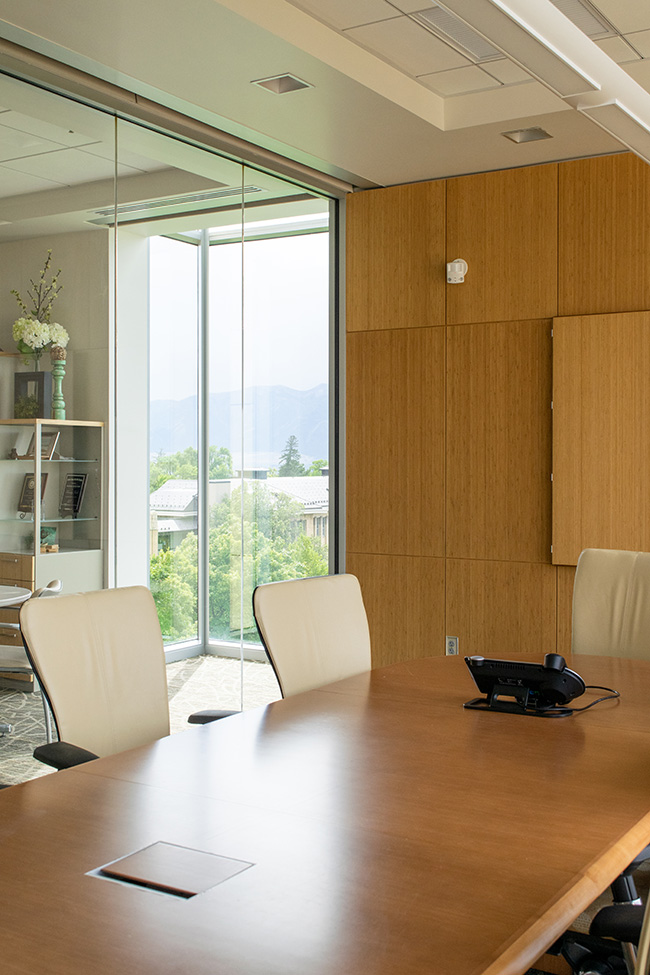
The Utah Wool Growers Association came into existence on March 16, 1935. Based in Salt Lake City, Utah, the association was formed to foster and protect the sheep and wool industry within the state, uphold the rights of wool growers within the state to use the national forests and the public lands for their needs, oppose the enactment of legislation designed to destroy or injure the sheep or wool industry, publish and circulate literature presenting the industry to the public, hold state and local exhibitions and contests to promote the acceptance of their products, assist financially in asserting or defending the rights of members of the association when conditions are such as to affect the common interest and acquire by purchase, lease or otherwise such real or personal property as may be deemed necessary to carry on the business of the association.
The Utah Wool Growers Association is one of twenty-two state and regional associations that comprise the National Wool Growers Association.
Noelle E. Cockett Conference Room
Room 437
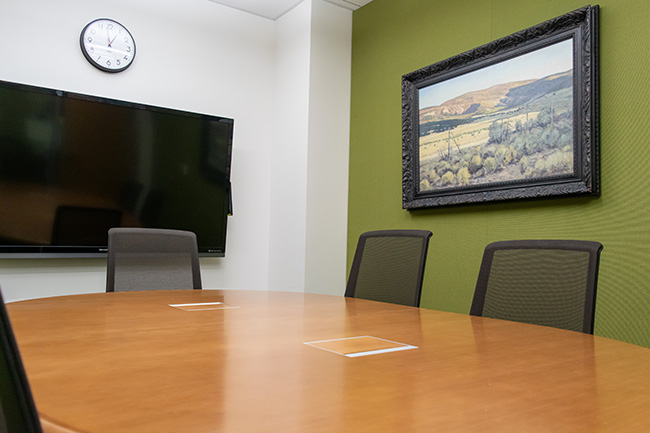
Noelle E. Cockett was appointed as Utah State University’s 16th president in October 2016, beginning her official tenure in January 2017. At the time, Cockett was serving as executive vice president and provost at USU and has held that position since 2013. Prior to that, she served USU as vice president for Extension from 2006 to 2013; dean of the College of Agriculture and Applied Sciences from 2002 to 2013; and director of the Utah Agriculture Experiment Station from 2009 to 2013.
Cockett has built a distinguished career in sheep genomics research, maintaining an active research program even while serving in various leadership positions at USU. Her research program has centered on the identification of genetic markers associated with economically important traits in sheep, as well as the development of resources that advance research on the sheep genome. Cockett and her colleagues published an article describing the sheep genome sequence in Science in 2014. Her current project focuses on the identification of genetic regions associated with entropion in newborn lambs. Cockett has served as the United States coordinator for sheep genome mapping since 1993 and is an active member of the International Sheep Genomics Consortium.
After receiving her master’s and doctorate in animal breeding and genetics from Oregon State University, Cockett spent five years as a research geneticist at the United States Department of Agriculture, Agriculture Research Service U.S. Meat Animal Research Center in Clay Center, Nebraska. She joined USU in 1990 as a researcher and assistant professor in the Department of Animal, Dairy and Veterinary Sciences in the College of Agriculture and Applied Sciences.
*Note: All bios are current and up-to-date as of Summer 2022.


